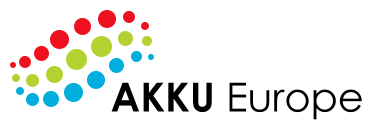
General information
| |||||||||||||||||||||
| Kind of tool: | Checklist | ||||||||||||||||||||
| Target group: | Executives, owners and managing directors, employees | ||||||||||||||||||||
| Duration in minutes: | 20 minutes | ||||||||||||||||||||
| Description of the tool: | In many cases, working at a desk and on the screen is associated with special and sometimes very high loads, which can be avoided by a good design of the workplaces. As a result, the long-term maintenance of the workability can be supported by usually only small changes. The aim of this instrument is to improve office activities in such a way that employees can carry out their work in a healthy and unrestricted manner until retirement. | ||||||||||||||||||||
| Benefit of the tool: | With the Check Office Workplace, you can specifically check the quality of the workplace in your office. Please check each individual workplace, as the conditions will always differ. The Check Office Workplace can serve as an introduction to a comprehensive risk assessment. | ||||||||||||||||||||
| Duration: | 20 minutes | ||||||||||||||||||||
| How to use the tool: | After you have described the workplace in a first step, please tick whether your workplace is optimal in the points mentioned ("yes") or not ("no"). If possible, make small changes directly and then evaluate your workplace after the change. If necessary, please explain your assessment in the column "Remarks" to be able to refer to it when developing design measures. The Check Office Workplace covers the following areas: 1.Job description 2.Arrangement of work equipment in the room 3.Lighting and lighting conditions 4.Indoor climate and noise 5.Worktable, work surface 6.Arrangement of work equipment 7.Office work chairs 8.Emergency care 9.Ladders and steps 10.Miscellaneous | ||||||||||||||||||||
| Floor and Area: |
| ||||||||||||||||||||
| Source: | D-IALOGO | ||||||||||||||||||||
 The European Commission's support for the production of this publication does not constitute an endorsement of the contents, which reflect the views only of the authors, and the Commission cannot be held responsible for any use which may be made of the information contained therein  The materials published on the AKKU project website are classified as Open Educational Resources' (OER) and can be freely (without permission of their creators): downloaded, used, reused, copied, adapted, and shared by users, with information about the source of their origin. | |||||||||||||||||||||